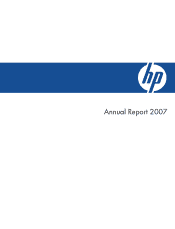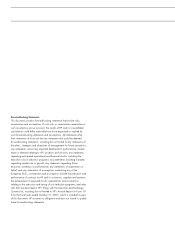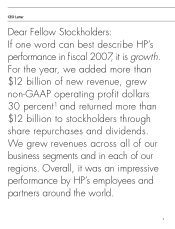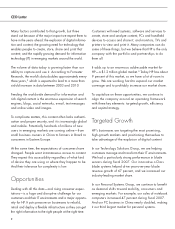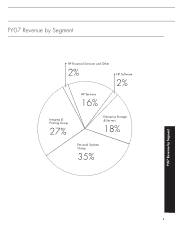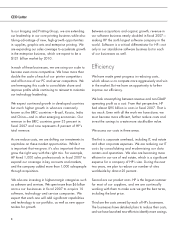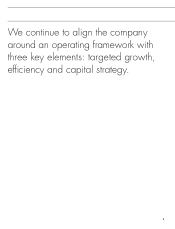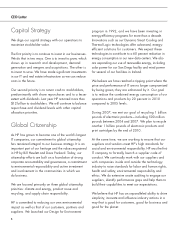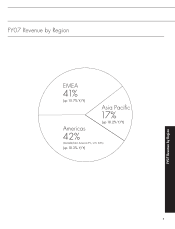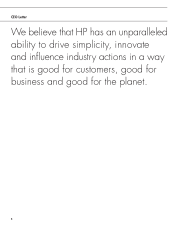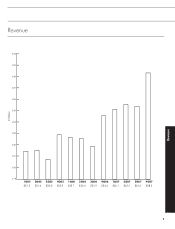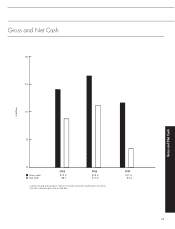HP 2007 Annual Report Download - page 4
Download and view the complete annual report
Please find page 4 of the 2007 HP annual report below. You can navigate through the pages in the report by either clicking on the pages listed below, or by using the keyword search tool below to find specific information within the annual report.
CEO Letter
Many factors contributed to that growth, but three
stand out because of the major impact we expect them to
have in the years ahead: the explosion of digital informa
tion and content; the growing need for technology that
enables people to create, store, share and print that
content; and the rapidly growing demand for information
technology (IT) in emerging markets around the world.
The volume of data today is growing faster than our
ability to capture and use it. According to Forrester
Research, the world’s data doubles approximately every
three years ,² which is expected to lead to a more than
sixfold increase in data between 2003 and 2010.
Feeding the worldwide demand for information and
rich digital content is the enormous expansion of search
engines, blogs, social networks, e-mail, text messages
and online video and images.
To complicate matters, this content often lacks authenti-
cation and proper security, and it is increasingly global
and mobile. Potentially hundreds of millions of new
users in emerging markets are coming online—from
small business owners in China to farmers in Brazil to
consumers in Eastern Europe.
At the same time, the expectations of consumers have
changed. People want instantaneous access to content.
They expect this accessibility regardless of what kind
of device they are using or where they happen to be.
And their tolerance for complexity is low.
-
Opportunities
Dealing with all this data—and rising consumer expec-
tations—is a huge and disruptive challenge for our
customers and their IT environments and a major opportu
nity for HP. It puts pressure on businesses to rebuild,
retool and deploy a flexible infrastructure so they can get
the right information to the right people at the right time.
-
Customers will need systems, software and services to
create, store and analyze content; PCs and handheld
devices to access and share it; and monitors, TVs and
printers to view and print it. Many companies can do
some of these things, but we believe that HP is the only
company with the portfolio and partnerships to do
them all.
It adds up to an enormous addressable market for
HP—a $1.2 trillion global market . ³ Today HP has about
9 percent of this market, so we have a lot of room to
grow. We are working hard to expand our market
coverage and to profitably increase our market share.
To capitalize on these opportunities, we continue to
align the company around an operating framework
with three key elements: targeted growth, efficiency
and capital strategy.
Targeted Growth
HP’s businesses are targeting the most promising,
high-growth markets and positioning themselves to
take advantage of the explosion of digital content.
In our Technology Solutions Group, we are helping
customers manage and transform their IT environments.
We had a particularly strong performance in blade
servers during fiscal 2007. Our innovative c-Class
blade systems helped drive year-over-year blade
revenue growth of 67 percent, and we increased our
industry-leading market share.
In our Personal Systems Group, we continue to benefit
as demand shifts toward mobility, consumers and
emerging markets. For example, our sales of notebook
computers increased 47 percent during fiscal 2007.
And our PC business in China nearly doubled, making
it our third largest market for personal systems.
2

